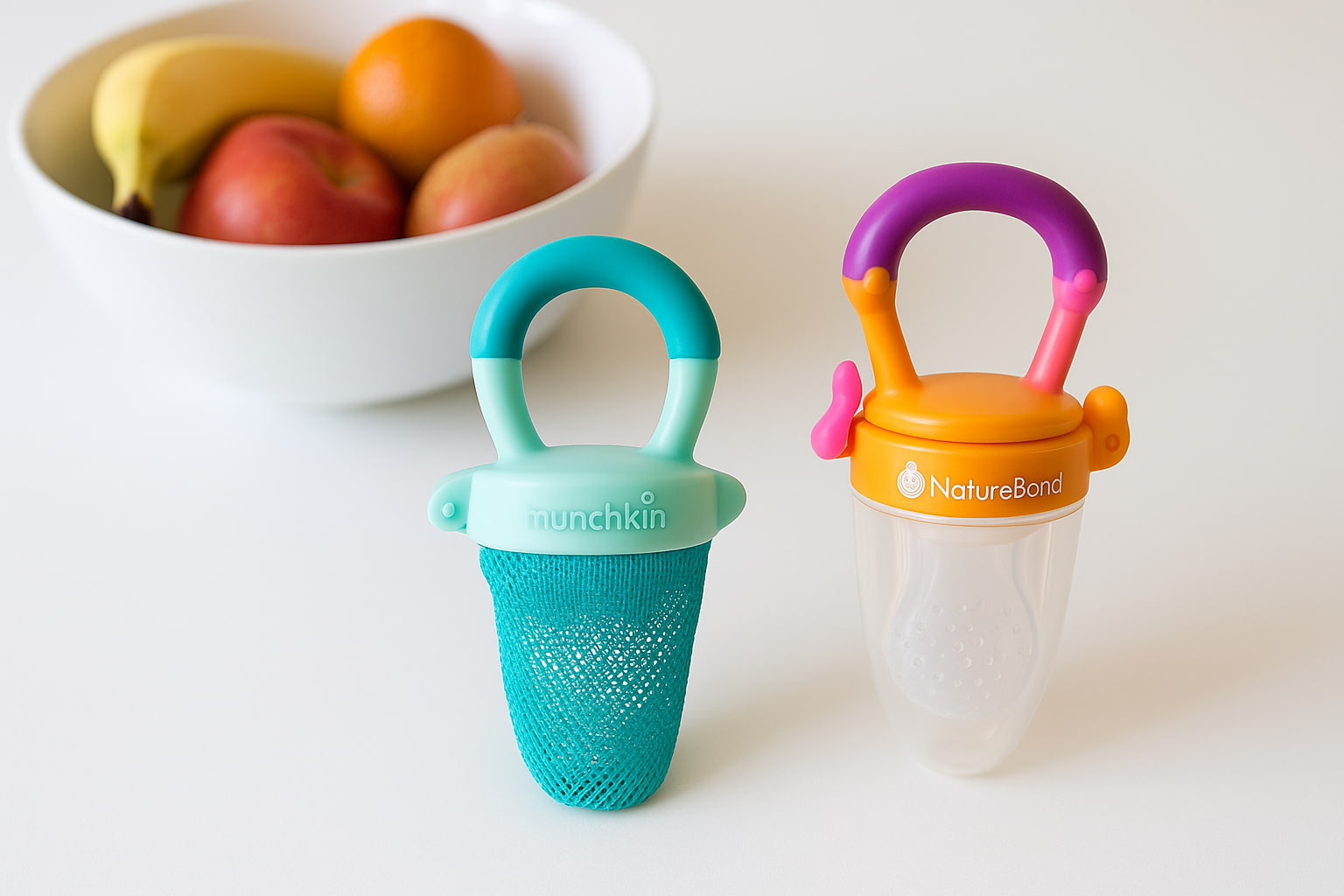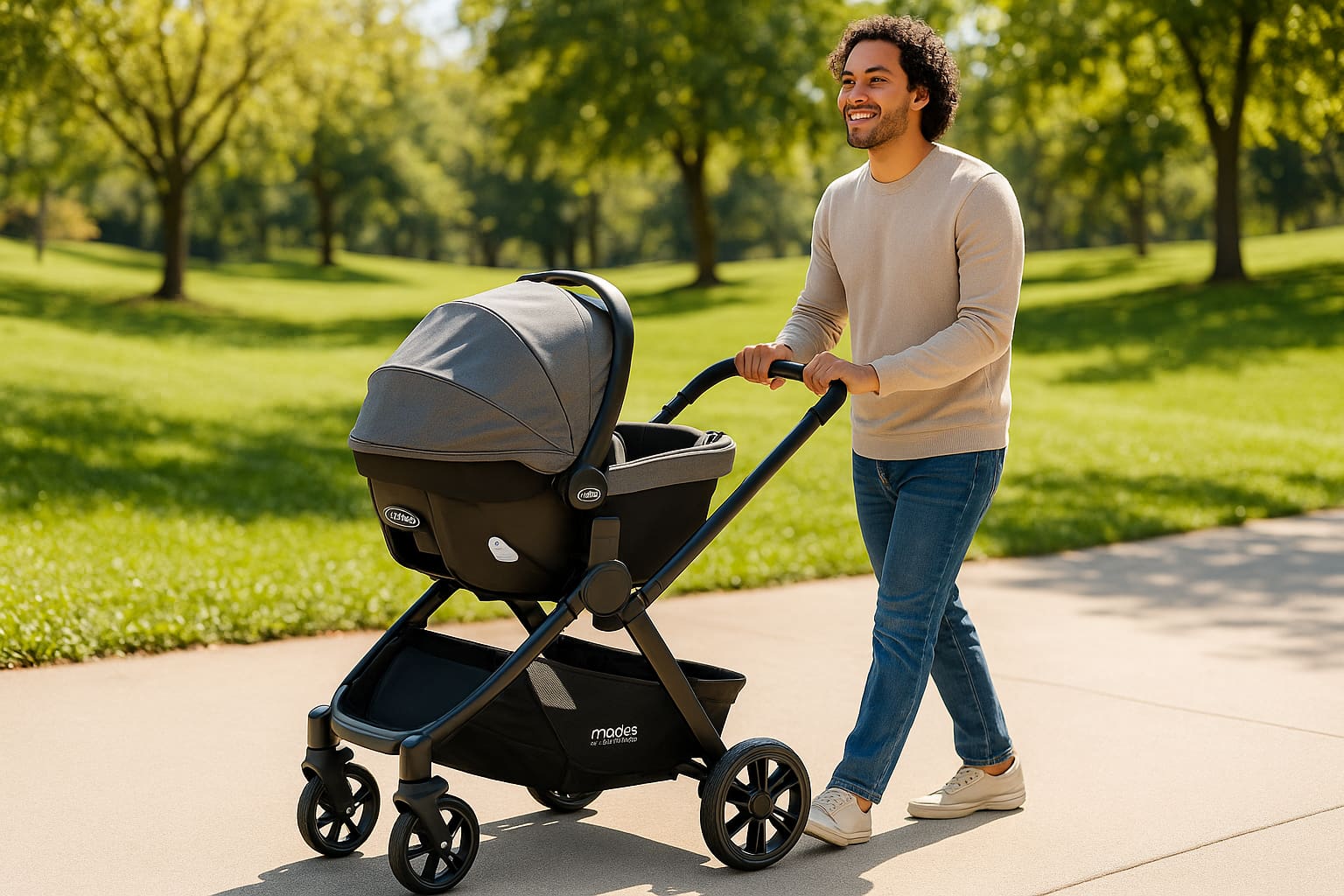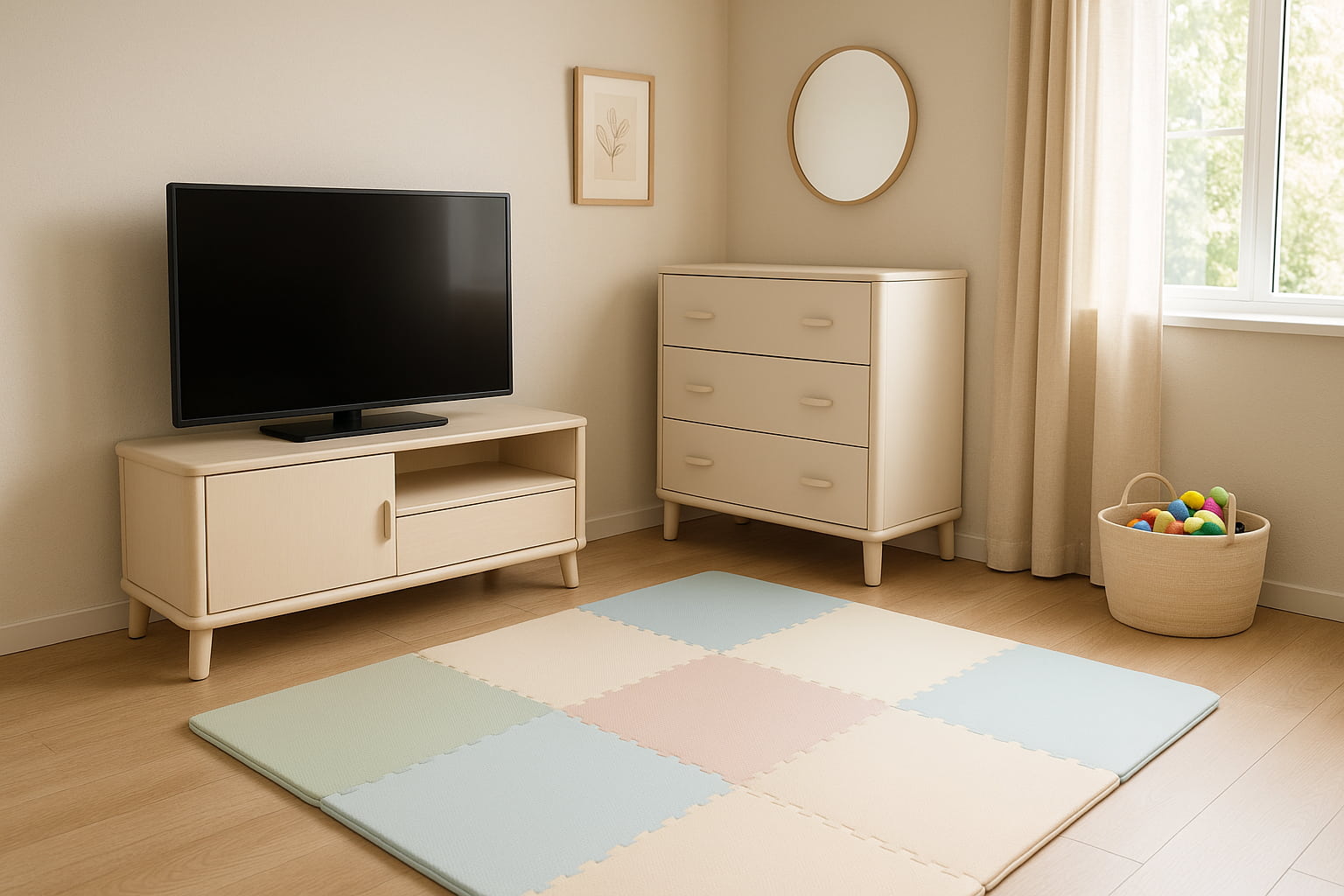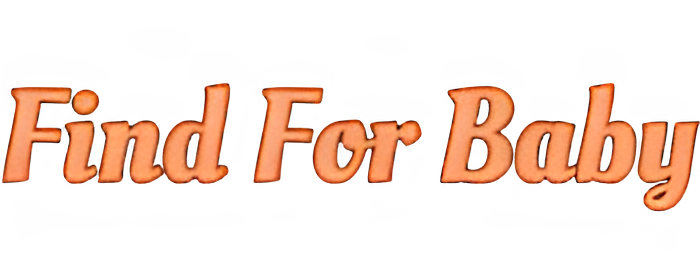🌟 Why Parents Compare Munchkin vs NatureBond Mesh Feeders
The Munchkin vs NatureBond mesh feeder debate is one many parents face when starting solids. This milestone is exciting because babies get to try new tastes and textures for the first time.
But along with the fun comes concern. The biggest worry? Choking. Babies under one are at higher risk, especially when trying fresh foods like fruits and vegetables.
Mesh feeders help lower this risk. They hold food inside a pouch and let only tiny pieces pass through. This way, little ones can enjoy real food in a safer way.
Two brands stand out: Munchkin and NatureBond. Both are trusted by parents, both focus on safety, and both make mealtimes less stressful. Still, they are not the same. Their designs, cleaning methods, and extra features differ, and those details matter.
In this guide, you’ll get a fair and clear comparison, so you can feel confident in choosing the right feeder for your baby.
✔️ Key Differences Between Munchkin & NatureBond
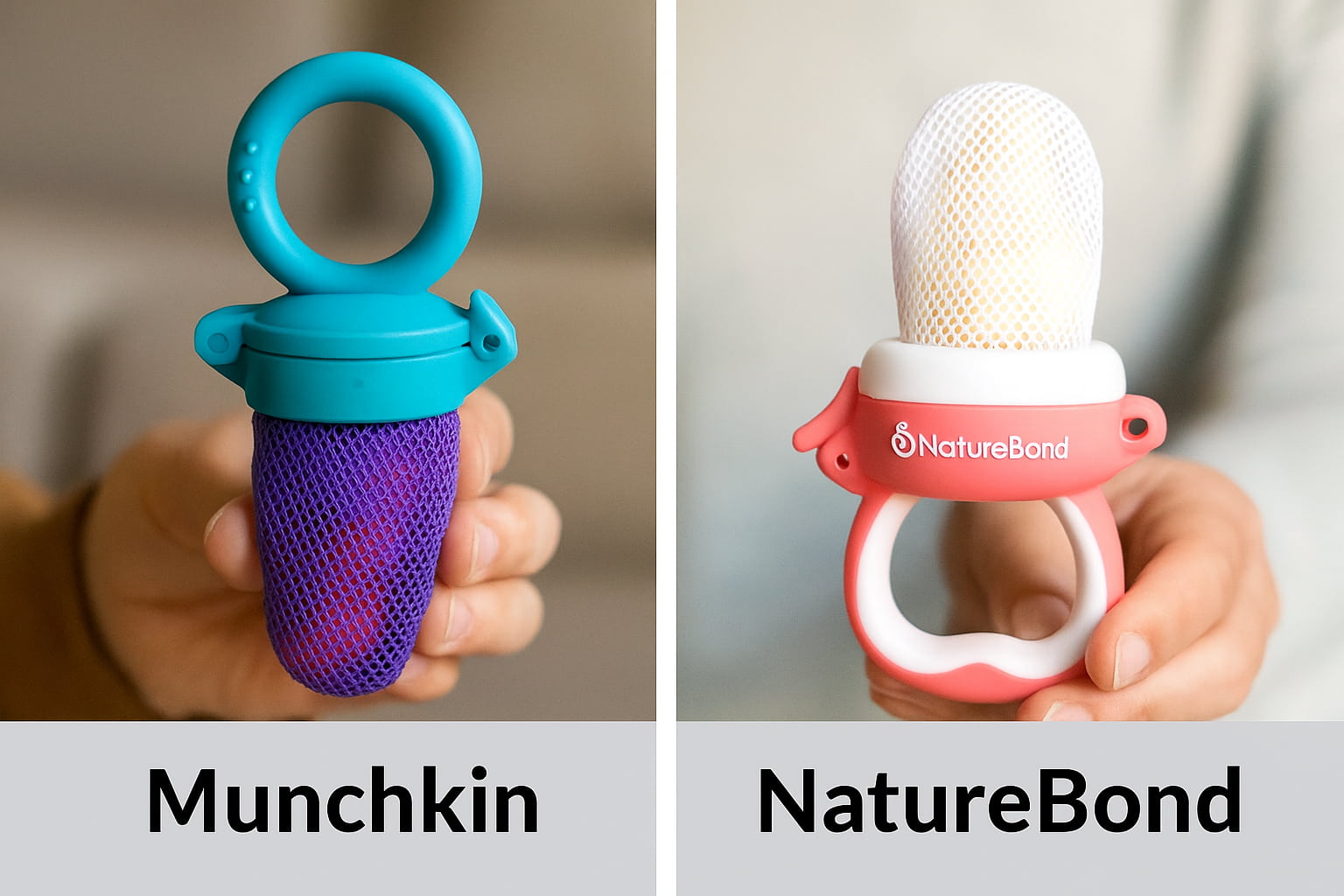
Both Munchkin and NatureBond mesh feeders are designed to make self-feeding safe. Still, they differ in small but important ways that parents notice.
🔹 Design & Build – Munchkin uses a classic mesh pouch, while NatureBond offers silicone sacs that are softer and easier for gums.
🔹 Material Safety – Both are BPA-free, but NatureBond highlights food-grade silicone, while Munchkin sticks with durable nylon mesh.
🔹 Ease of Cleaning – NatureBond is dishwasher-friendly with removable sacs. Munchkin’s mesh can trap food and may need more scrubbing.
🔹 Sizes & Colors – Munchkin usually comes in bright, playful colors. NatureBond includes multiple sac sizes to grow with your baby.
These differences make each brand appealing in its own way, depending on your baby’s stage and your cleaning preferences.
🔍 Choosing the Right Feeder by Age & Stage
Picking the right feeder depends on your baby’s age and needs. Younger babies and older infants benefit from different styles.
✔ 4–6 Months – At this stage, babies are starting solids. A small feeder with soft mesh or silicone sacs works best for gentle gums.
✔ 6+ Months – Older babies need larger feeders. They can handle chunkier textures and benefit from bigger sacs that fit more food.
✔ Teething Relief – Chilled fruits in a feeder can soothe sore gums while introducing safe tastes.
✔ First Foods – Use soft foods like bananas or steamed veggies to make early eating easy and safe.
A well-matched feeder keeps feeding fun while lowering choking risks.
👉 Want safer feeding tools? See our guide on baby feeding sets that prevent choking.
🍼 Munchkin vs NatureBond Mesh Feeders (Detailed Reviews)
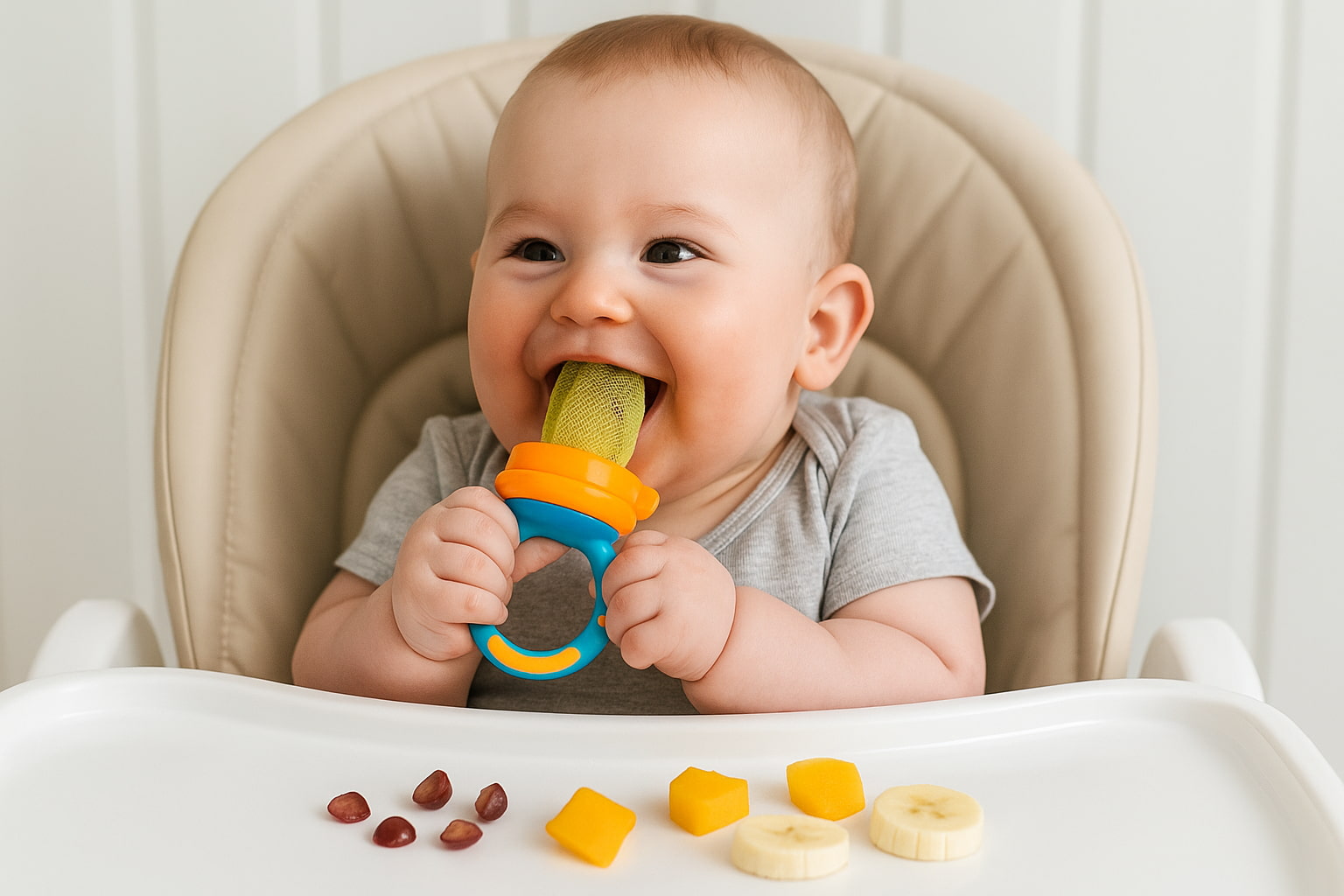
1. Munchkin Baby Feeder, 2-Pack, Blue/Mint, for Fresh Food and Fruit
The Munchkin Baby Feeder is designed to let infants enjoy fresh fruits and veggies safely. Its mesh sac allows only small, chewable bits of food to pass through, lowering choking risks. The easy-grip handle is shaped for tiny hands and helps babies practice self-feeding early.
🍼 Why Parents Love It
✅ Simple mesh design makes it easy for babies to chew safely
✅ Compact 2-pack offers great value for families
✅ Lightweight with an ergonomic grip for little hands
✅ Dishwasher-safe for quick cleaning
💡 Thinking About It?
Perfect for parents looking for an affordable and beginner-friendly mesh feeder that keeps early feeding safe.
2. NatureBond Baby Food Feeder/Fruit Feeder Pacifier Nibbler (2 Pack)
The NatureBond Feeder uses premium food-grade silicone sacs instead of traditional mesh. This makes it softer on gums, easier to clean, and more durable over time. It includes three different sac sizes, which grow with your baby as they move through feeding stages.
🍼 Why Parents Love It
✅ Silicone sacs are gentle, hygienic, and long-lasting
✅ Comes in a 2-pack with extra replacement sacs
✅ Different sac sizes fit 4+ month babies through toddler stage
✅ Colorful design appeals to both babies and parents
💡 Thinking About It?
Ideal for parents who want an advanced feeder with silicone comfort and flexible sizing options.
📊 Mesh vs Silicone: Which Works Best?
When picking a feeder, parents often ask whether mesh or silicone is better. Both options let babies taste fresh food safely, but each has its own strengths.
✔ Durability: Mesh can wear down faster with frequent use. Silicone tends to last longer and resists tearing.
✔ Comfort for gums: Mesh feels rougher, which some babies dislike. Silicone is softer and doubles as a teether
✔ Cleaning: Mesh can trap food and take more effort to scrub. Silicone is easier to wash and usually dishwasher-safe.
In short, mesh feeders are simple and affordable, while silicone feeders give added comfort and easier upkeep. Your choice depends on your baby’s stage and your cleaning preference.
💡 How Parents Actually Use Them
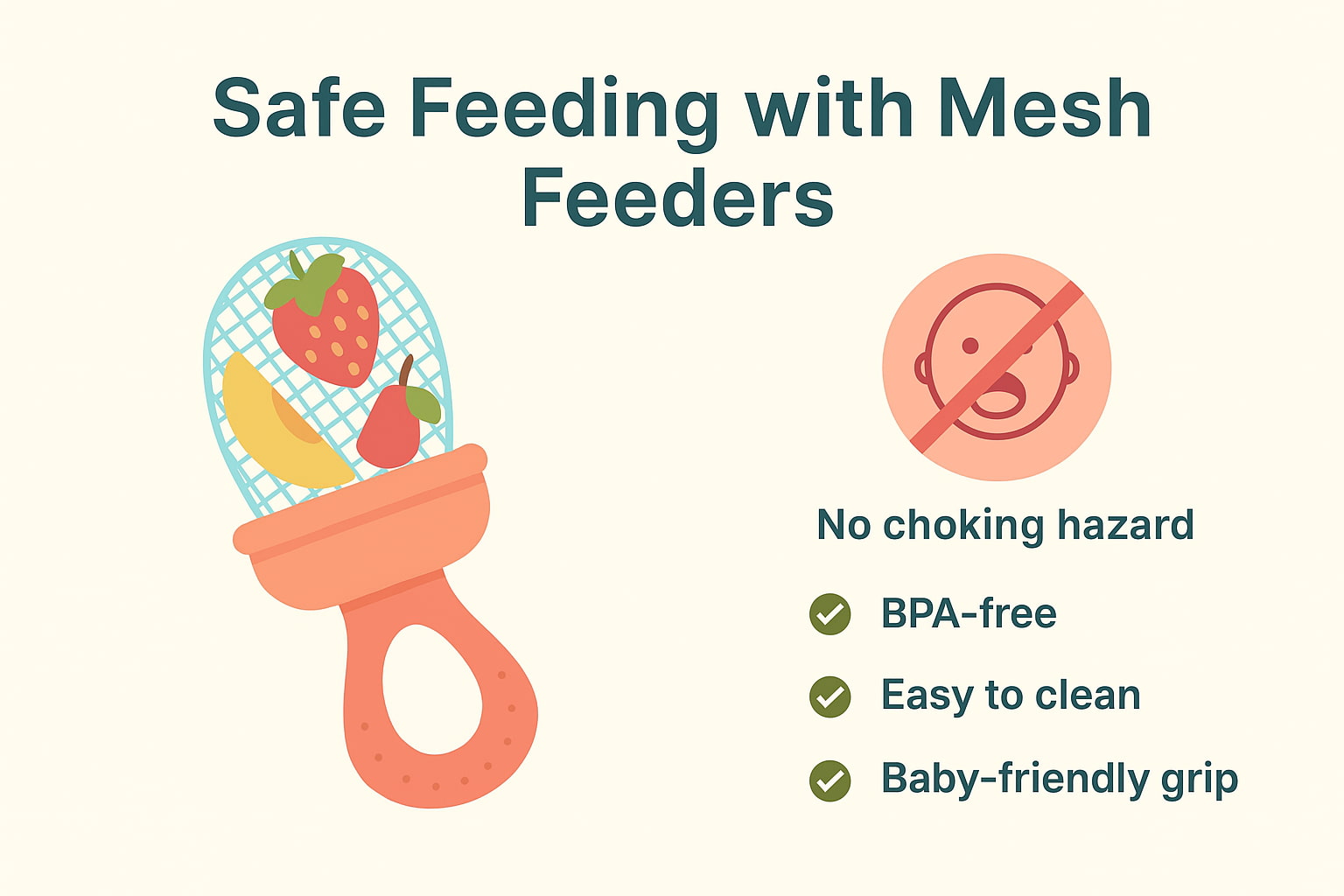
Parents often share that mesh and silicone feeders both make weaning easier, but they also mention everyday trade-offs. Cleaning, baby comfort, and mess levels come up the most.
Pros parents mention:
✔ Babies can taste fruits safely without big chunks.
✔ Helps soothe gums during teething.
✔ Makes introducing solids less stressful.
Cons parents mention:
❌ Mesh styles can get messy and take longer to clean.
❌ Some babies reject rougher textures at first.
❌ Parents must replace feeders once they wear or stains appear.
Overall, many say silicone is simpler to use, while mesh can be more budget-friendly.
👉 Curious about starter spoons? Check our Munchkin vs NumNum spoon comparison.
📎 Fun Fact Box
According to the HealthyChildren, choking is a leading cause of injury among infants, and tools like mesh feeders can lower risks by letting babies explore food safely.
🧼 Cleaning and Maintenance Tips
Keeping mesh feeders clean is just as important as choosing the right one. Leftover food can hide in the mesh or silicone parts, making it unsafe for your baby. Both Munchkin and NatureBond feeders are easy to clean. Parents just need to follow simple steps to keep them safe and long-lasting.
🔹 Rinse right after use to prevent food from sticking.
🔹 Boil or sterilize the feeder if the material allows it (check the label).
🔹 Store in a clean, dry case or container to avoid germs.
🔹 Replace feeders if you notice wear, tears, or cracks.
Good cleaning habits not only protect your baby but also extend the feeder’s life. A clean feeder means worry-free feeding and safer fun at mealtimes.
💬 Parents’ Feedback & Real-Life Experiences
Parents who have tried mesh feeders often share both relief and a few challenges. Many say these feeders reduce choking worries and help babies try new foods with less stress.Babies can taste fruits and veggies in a safe way. Parents feel more confident when their little ones try self-feeding.
Still, some point out that cleaning can be tricky. Mesh feeders, in particular, may stain or trap food if not washed right away. Silicone versions are easier to clean but may feel less sturdy to some families.
Common Feedback:
🟢 Safer way to try solids without choking fears
🟢 Babies enjoy exploring flavors and textures
🟢 Can be messy to clean if left too long
🟢 Silicone is easier to maintain than mesh
👉 Want stress-free meals? Read our Skip Hop vs Munchkin cup comparison.
🧠 Final Verdict – Which Feeder Should You Choose?
Choosing the right feeder can feel overwhelming, but safety and peace of mind should always come first. Both Munchkin and NatureBond offer smart designs that help babies explore new foods without the constant fear of choking. They give parents confidence while making mealtime less stressful.
Munchkin is a solid choice for families who want something simple, affordable, and easy to start with. Its mesh design works well for first tastes and helps babies learn to self-feed.
NatureBond is ideal for parents looking for a more flexible option. Its silicone sacs are gentle on gums, easier to clean, and come with extras that grow with your baby. It feels more premium but still practical for everyday use.
In the end, the best pick depends on your needs. This Munchkin vs NatureBond mesh feeder comparison shows that either way, your baby gets a safe, reliable start with solids.
🧾 Quick Recap for Busy Parents
Choosing between Munchkin and NatureBond comes down to your baby’s stage and your own priorities. Both feeders help reduce choking risk and make first foods safer, but they offer different strengths. If you want something simple and budget-friendly, Munchkin is a great starter. If you prefer extra accessories and a more durable silicone design, NatureBond may be the better pick.
1. Munchkin Feeder – Affordable 2-pack with sturdy handles, ideal for first-time feeders.
2. NatureBond Feeder – Includes extra silicone sacs, built for comfort and long-term use.
Both are trusted by parents, and either one can make mealtimes less stressful while giving your baby a safe way to explore real food.
❓ FAQ: Munchkin vs NatureBond Mesh Feeders
Parents often have similar questions when choosing between these two feeders. Here are the most common ones:
🔹 Which feeder lasts longer?
Both are durable, but many parents say the NatureBond silicone sacs hold up better over time compared to traditional mesh.
🔹 Which is easier to clean?
NatureBond’s silicone design is simpler to wash and dries quickly. Munchkin’s mesh can trap food and may need more scrubbing.
🔹 Are both BPA-free and safe?
Yes. Both Munchkin and NatureBond feeders are BPA-free, baby-safe, and designed to reduce choking risks.
This makes it clear that while both options are safe, the right choice depends on what matters most, durability, cleaning, or price.
Disclaimer: This article is for informational purposes only and is not a substitute for medical advice. Always consult a doctor in emergencies.
Writer Byline: Written with care by the FindForBaby team.
